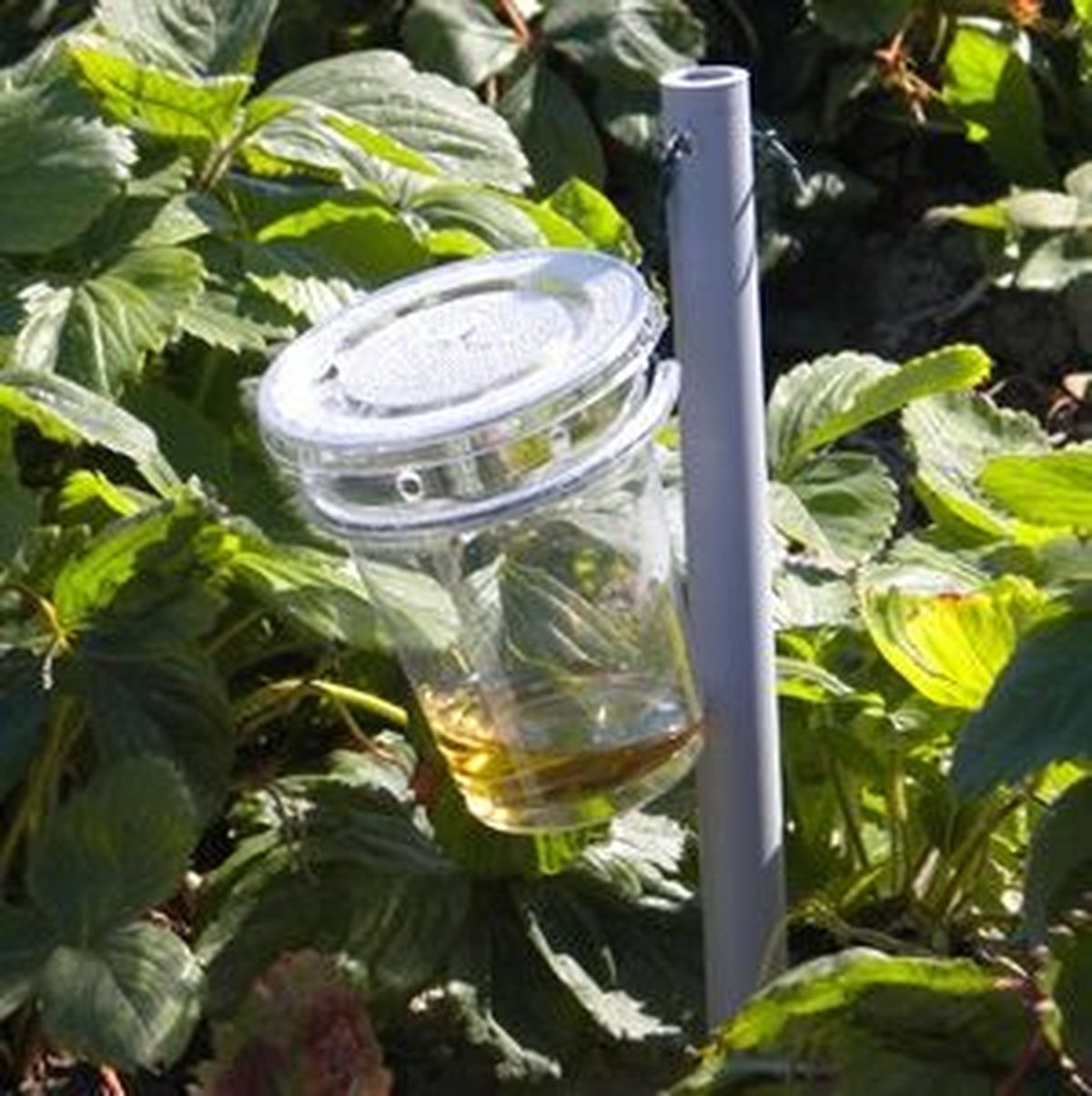This column reflects the opinion of the writer. Learn about the differences between a news story and an opinion column.
Gardening: Harmful fruit insect – the spotted wing drosophila – raising concerns in area gardens

Recently a reader contacted me about some tiny white worms she was finding in her fresh raspberries. That didn’t sound good because the only worm we find in raspberries is the larvae of the spotted wing drosophila, an insect that is raising havoc in fruit crops on the West Side.
A quick check with Tim Kohlhauff, Plant Clinic coordinator for the WSU Spokane County Extension Master Gardeners confirmed it.
Spotted wing drosophila has been in the coastal areas of the Pacific Northwest since 2009, when it started showing up in blueberries, raspberries, blackberries, cherries, grapes, plums and peaches. It lays its eggs in these soft fruits as they ripen causing the fruit to discolor and decay.
This is particularly troublesome for commercial fruit growers and because of the importance of those crops to the state’s economy, it is important for gardeners to control them in home berry and fruit plantings.
“Homeowners have reported it in Cheney, northwest Spokane, the Valley,” Kohlhauff said.
He added the drosophila also go after natives like huckleberries, elderberry and serviceberry.
“One person even brought in infested huckleberries from his ‘secret spot.’ He would only tell us it was on the St. Joe River drainage in Idaho.”
Also known as a vinegar fly, the adult flies are about an eighth of an inch long, yellow brown and the males have two dark spots at the tip of their otherwise clear wings.
The female lays her eggs in the ripe fruit where the larvae grow for about 10 days depending on the temperature.
After damaging the fruit, the larvae drop to the ground to pupate until next season.
The worms are white and about a fourth of an inch long.
The best way to determine if you have spotted wing drosophila is to set up traps and monitor for the presence of adult flies.
A simple trap is made from a disposable drink cup like those that iced-coffee comes in.
Drill seven to nine3/8-inch diameter holes around the rim about 1 inch from the top. Add a string or wire handle for hanging the trap.
To the trap add about 6 ounces of real apple cider vinegar.
Hang a yellow sticky card or a card with double sided tape from the inside of the lid and put the lid back on.
Hang the trap at a middle point in your berry canes or fruit trees.
Check the trap for adults every few days. The flies will appear as the crop ripens.
If you are finding the larvae in your fruit, then it is important to pick up any overripe or rotten fruit off the ground and to keep the plants picked as soon as the fruit is ripe.
Throw rotten fruit in the trash. This will cut down on overwintering insects that will go after the crop next year.
Chemical controls include products containing Spinosad sprayed in the evening to control adult flies but after the bees are gone.